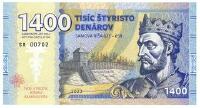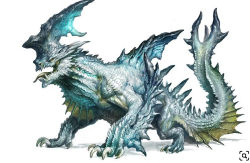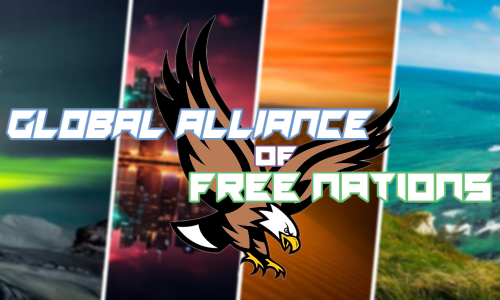This nation is in Vacation Mode for the next 233 turns. This nation cannot be attacked or traded with during that time.
| National Factbook |
| Flag: |

|
| Nation Name: |
The Republic of Drakenshire |
| Leader Name: |
Nikolai Dragan |
| Currency: |

Kruge |
| National Animal: |

Frostwing Drake |
| History: |
Early Settlements
Drakenshire’s history begins in the Age of Ancients, when nomadic tribes inhabited the fertile valleys. These tribes revered dragons, believing them to be guardians of the land. Over centuries, they formed a loose confederation, known as the Drakens, united by shared customs and a deep connection to the land.
The Rise of the Kingdom
In the late 2nd millennium, the tribes united under the leadership of King Eldrin, a charismatic warrior. He established the Kingdom of Drakenshire, marking a significant shift from tribal autonomy to centralized governance. This period saw prosperity, as trade flourished with neighboring regions, and the kingdom expanded its borders.
However, peace was fleeting. The Kingdom faced external threats, notably from the marauding clans of the north and the encroaching shadows of the West. The famed Dragon Wars erupted, pitting the kingdom against these aggressors. It was during these wars that the legendary Dragon Knights, elite warriors bonded with dragons, emerged, turning the tide in favor of Drakenshire.
The Golden Age
The aftermath of the Dragon Wars ushered in a Golden Age. Under King Aric the Just, the kingdom enjoyed advancements in art, science, and magic. The capital city, Drakenshaven, became a cultural hub, attracting scholars, mages, and artists. The Great Library of Drakenshaven was established, preserving the lore and history of the realm.
The Rise of the Republic
However, the prosperity was marred by increasing oppression from the nobility, leading to widespread discontent among the common folk. The disillusionment reached its peak during the reign of King Theros the Cruel, whose tyrannical rule ignited the flames of revolution. In a remarkable uprising known as the Flame of Freedom, the people overthrew the monarchy and established the Republic of Drakenshire in 1432.
The Republic's Challenges
The early years of the republic were fraught with challenges, as the new government struggled to maintain stability. The assassination of the first President, Elara Voss, led to a power vacuum and infighting among factions. This period, known as the Time of Shadows, saw the rise of powerful guilds and mercenary groups, complicating governance.
Restoration and Unity
By the late 15th century, visionary leaders emerged, advocating for unity and reform. The Constitution of Drakenshire was ratified in 1475, establishing a framework for governance that included representation for all citizens. The introduction of the Council of Elders helped mediate conflicts among factions, fostering a sense of national identity.
Modern Era
In the 18th century, Drakenshire faced new challenges: industrialization and the impact of external conflicts, including skirmishes with neighboring territories. Yet, the republic adapted, embracing innovation while maintaining its cultural heritage. The annual Festival of Dragons celebrates the ancient bond with these mythical creatures, reminding citizens of their storied past.
Today, the Republic of Drakenshire stands as a beacon of resilience and unity, drawing from its rich history to navigate the complexities of the modern world. Its citizens continue to honor the legacy of their ancestors while striving for a future filled with promise and adventure. |
| Geography |
| Continent: |
Europe |
| Land Area: |
39,589.76 sq. km |
| Terrain: |
Fjords and Coastlines
Drakenshire’s western border is lined with deep, majestic fjords, carved by ancient glaciers. These natural wonders not only offer breathtaking views but have also served as vital trade routes for centuries. The coastal areas are dotted with quaint fishing villages, where communities have thrived on the bounty of the sea. The relationship between the inhabitants and the ocean has fostered a rich maritime culture, with seafaring traditions passed down through generations.
Mountains and Valleys
Moving inland, the terrain transitions to towering mountains, the peaks often shrouded in mist and snow. The Stormy Mountains, as they are called, are a defining feature of Drakenshire, creating a natural barrier that has historically protected the republic from invasions. The valleys between these mountains are lush and fertile, ideal for agriculture and settlements. Here, small farms and homesteads thrive, where crops like barley and potatoes are cultivated alongside livestock.
Forests and Wildlife
The eastern region of Drakenshire is covered by dense, ancient forests. These woodlands are home to diverse flora and fauna, including deer, moose, and a variety of birds. The forests have not only provided resources such as timber and medicinal herbs but have also been integral to local folklore, featuring prominently in the legends of the Drakens.
Lakes and Rivers
Scattered throughout the republic are numerous lakes, some glacial and others formed by river systems that flow from the mountains. The largest of these, Lake Drakenshold, is central to the republic’s identity, often regarded as a sacred site. Rivers like the Serpent River meander through the landscape, supporting both ecosystems and human settlements. These waterways have historically facilitated trade and transportation, connecting remote communities.
Climate
The climate of Drakenshire is varied, with coastal areas experiencing milder temperatures due to the Gulf Stream, while the interior regions face harsher winters. The changing seasons bring a vibrant tapestry of colors: spring blossoms, summer greenery, autumn foliage, and winter’s snow-covered tranquility. This seasonal diversity has shaped local festivals and traditions, celebrating the rhythms of nature.
Cultural Impact
The rugged terrain of Drakenshire has fostered a strong sense of community and resilience among its inhabitants. The challenges posed by the environment have led to a culture of innovation and cooperation, as communities band together to overcome obstacles. Traditional crafts, such as woodworking and weaving, reflect the rich resources of the land, while stories of legendary heroes and mythical creatures born from the landscape resonate deeply in the cultural consciousness. |
| Highest Peak: |
Mt. Troy,
10,000 meters
|
| Lowest Valley: |
Mesa Basin,
-600 meters
|
| Climate: |
Seasonal Diversity
Drakenshire is characterized by four distinct seasons: vibrant springs, warm summers, colorful autumns, and harsh winters. Each season brings its own charm and challenges, contributing to the republic’s rich cultural traditions and activities.
Spring
Spring in Drakenshire is a time of renewal and awakening. As the snow melts, rivers swell, and the landscape bursts into life with blooming wildflowers and budding trees. The temperatures gradually rise, typically ranging from 5°C to 15°C (41°F to 59°F). This season heralds the start of agricultural activities, with farmers preparing their fields for planting. Festivals celebrating fertility and new beginnings are common, reflecting the community’s connection to the land.
Summer
Summer brings mild to warm temperatures, often reaching between 15°C and 25°C (59°F to 77°F). The coastal areas enjoy a temperate climate, thanks to the influence of the Gulf Stream, while inland regions can experience warmer spells. Long daylight hours—where the sun barely sets—invite outdoor festivities, hiking, and cultural events. This is also the peak tourist season, as visitors flock to explore the stunning fjords and mountains.
Autumn
As summer fades, autumn transforms Drakenshire into a tapestry of reds, oranges, and golds. Temperatures begin to cool, ranging from 5°C to 15°C (41°F to 59°F). Harvest festivals celebrate the bounty of crops, while locals prepare for the colder months. The crisp air and changing foliage create a picturesque landscape, inspiring artists and storytellers alike.
Winter
Winter in Drakenshire can be severe, particularly in the mountainous regions. Temperatures often drop below freezing, averaging between -5°C and 5°C (23°F to 41°F). Heavy snowfall blankets the land, creating a winter wonderland ideal for skiing and other winter sports. Communities embrace the cold with traditions like winter markets and celebrations of light, helping to combat the long, dark nights.
Precipitation Patterns
Drakenshire receives moderate precipitation throughout the year, with coastal areas experiencing more rainfall due to moist air from the ocean. Snowfall is common in winter, especially in the higher altitudes of the Stormy Mountains. The diverse climate supports a variety of ecosystems, from lush forests to alpine tundras, enriching the biodiversity of the region.
Climate Influence on Culture
The climate has profoundly influenced Drakenshire’s culture and way of life. Traditional clothing reflects the need for warmth during harsh winters, while seasonal foods—like root vegetables in winter and fresh fish in summer—are central to the local cuisine. Festivals and celebrations are closely tied to the seasons, marking agricultural cycles and honoring the natural world. |
| People & Society |
| Population: |
1,290,231 people |
| Demonym: |
Draken |
| Demonym Plural: |
Drakens |
| Ethnic Groups: |
Karpati - 50.0%
Valek - 50.0% |
| Languages: |
Volkström - 82.0%
Kreuzsprache - 18.0% |
| Religions: |
Order of Kuekyo - 100.0% |
| Health |
| Life Expectancy: |
200 years |
| Obesity: |
0% |
| Alcohol Users: |
0.1% |
| Tobacco Users: |
0% |
| Cannabis Users: |
0% |
| Hard Drug Users: |
0% |
| Economy |
| Description: |
Key Economic Sectors
Agriculture and Forestry: Agriculture plays a crucial role in the Drakenshire economy. The fertile valleys yield a variety of crops, including barley, potatoes, and root vegetables, while orchards produce apples and berries. Livestock farming, particularly sheep and dairy cattle, is also significant. The forestry sector thrives on sustainable practices, with timber being a valuable export. Locally sourced wood is used in traditional crafts and construction, supporting the economy while preserving the environment.
Fishing and Aquaculture: The coastal fjords and abundant waters provide a rich fishing industry. Drakenshire is renowned for its sustainable fishing practices, catching species such as salmon, cod, and herring. Aquaculture has also gained prominence, with fish farms producing high-quality seafood for both domestic consumption and export. Fishing is not only an economic driver but also a cultural cornerstone, deeply intertwined with the identity of coastal communities.
Tourism: With its breathtaking landscapes, rich history, and vibrant culture, tourism is a vital sector of the Drakenshire economy. Visitors are drawn to the stunning fjords, hiking trails in the Stormy Mountains, and the annual Festival of Dragons, which celebrates local folklore and traditions. Eco-tourism is emphasized, promoting sustainable practices that protect the environment while providing economic opportunities for local communities. The hospitality industry, including hotels, restaurants, and guided tours, has seen significant growth.
Crafts and Artisanal Goods: Drakenshire has a strong tradition of craftsmanship, with artisans producing handmade goods that reflect the region's cultural heritage. From textiles to woodworking, local crafts are highly valued both domestically and abroad. The export of artisanal products contributes to the economy and promotes Drakenshire's identity on the global stage.
Renewable Energy: As part of its commitment to sustainability, Drakenshire has invested in renewable energy sources. Hydropower from the region’s rivers and wind energy from coastal areas provide a significant portion of the republic’s electricity. This not only supports local industries but also positions Drakenshire as a leader in green technology.
Trade and Export
Drakenshire maintains strong trade relationships with neighboring countries and regions, exporting seafood, timber, agricultural products, and handcrafted goods. The republic's commitment to sustainability has enhanced its reputation as a producer of high-quality, eco-friendly products. Trade agreements focus on promoting fair practices and supporting local economies.
Challenges and Opportunities
While the economy of Drakenshire is diverse, it faces challenges such as climate change, which affects agriculture and fishing, and the need to balance economic growth with environmental conservation. However, the republic's strong community values and innovative spirit provide opportunities for adapting to these challenges. Investment in education and training, particularly in sustainable practices and technology, is essential for future growth. |
| Average Yearly Income: |
$66.57 |
| Gross Domestic Product (GDP): |
$965,062,840.00 |
| GDP per Capita: |
$747.98 |
| Gross National Income (GNI): |
$463,092,290.00 |
| Industries: |
1. Agriculture
Agriculture is the backbone of Drakenshire’s economy. The fertile valleys and temperate climate allow for the cultivation of a variety of crops, including:
Grains: Barley, oats, and rye are staple crops, essential for both local consumption and export.
Root Vegetables: Potatoes, carrots, and turnips thrive in the rich soil, supporting local diets and markets.
Berries and Fruits: The region is known for its high-quality berries, particularly blueberries and strawberries, which are harvested in abundance during the summer months.
Sustainable farming practices are emphasized, with an increasing focus on organic methods that promote soil health and biodiversity.
2. Fisheries
The coastal waters of Drakenshire are teeming with marine life, making fisheries a vital industry. The key aspects include:
Sustainable Fishing: Local fishermen practice sustainable methods to preserve fish populations and marine ecosystems. Species such as cod, herring, and shellfish are commonly harvested.
Aquaculture: The rise of aquaculture has helped meet demand while reducing pressure on wild stocks. Shellfish and salmon farming are particularly important.
Export Markets: Fresh seafood is a significant export product, with Drakenshire’s reputation for quality enhancing its market appeal.
3. Forestry
The extensive forests of Drakenshire provide a wealth of resources:
Timber Production: Sustainable forestry practices ensure that timber harvesting does not deplete resources. Drakenshire’s timber is used for construction, furniture making, and crafts.
Non-Timber Products: The forests also yield mushrooms, berries, and medicinal herbs, which are harvested and sold locally and regionally.
The forestry industry places a strong emphasis on conservation and reforestation, ensuring the health of forest ecosystems.
4. Craftsmanship and Artisanship
Drakenshire has a rich tradition of craftsmanship, which plays a significant role in its economy:
Handcrafted Goods: Local artisans produce a variety of goods, including pottery, textiles, and wooden crafts. These items often reflect traditional designs and techniques.
Art Galleries and Markets: Artisans showcase their work in local markets and galleries, attracting both residents and tourists. This not only supports individual artists but also contributes to the local economy.
5. Renewable Energy
In alignment with its commitment to sustainability, Drakenshire is investing heavily in renewable energy sources:
Hydroelectric Power: Utilizing its rivers and waterfalls, Drakenshire has developed hydroelectric plants that provide clean energy to communities.
Wind Energy: Wind farms in the coastal areas harness the strong winds, contributing to the republic's energy supply and reducing reliance on fossil fuels.
This sector not only supports energy needs but also creates jobs in green technology and engineering.
6. Tourism
Tourism is a burgeoning industry, driven by Drakenshire’s natural beauty and cultural heritage:
Outdoor Recreation: The stunning landscapes attract hikers, skiers, and nature enthusiasts, contributing to local businesses such as hotels, restaurants, and guides.
Cultural Festivals: Events like the Festival of Dragons celebrate local folklore, drawing visitors and promoting community engagement.
7. Technology and Innovation
Emerging industries in technology and innovation are reshaping Drakenshire’s economic landscape:
Eco-Tech Startups: Companies focused on environmental solutions, such as sustainable agriculture technologies and waste management systems, are gaining traction.
Software Development: A growing number of tech firms are establishing themselves in Drakenshire, contributing to the digital economy. |
| Military |
| History: |
### History of the Republic of Drakenshire Military
#### Origins and Early Development
The military of the Republic of Drakenshire traces its roots back to the early settlements of the region, where communities banded together for mutual defense against external threats. These early groups formed militias to protect their homes from incursions by rival tribes and marauding bands. The rugged terrain and vast forests provided natural fortifications, fostering a culture of self-reliance and resilience.
As these settlements grew into established towns, the need for a more organized defense became evident. By the late 17th century, local leaders began to formalize military structures, establishing a militia system that allowed for rapid mobilization of local citizens. This system not only helped defend against external threats but also reinforced a sense of community and shared responsibility.
#### The Formation of the Republic
The turning point in the military's history came in the early 19th century with the establishment of the Republic of Drakenshire. Following a period of strife and conflict with colonial powers, the republic declared independence, prompting the need for a cohesive national defense force. The newly formed government recognized that a strong military was essential to safeguard the republic’s sovereignty and territorial integrity.
In 1821, the Drakenshire National Defense Act was passed, officially establishing the Drakenshire Army as the republic’s primary military force. This act outlined the organization, duties, and rights of the military, ensuring that it would operate under civilian control while maintaining the capacity to defend against external threats.
#### The Age of Expansion
Throughout the late 19th and early 20th centuries, Drakenshire underwent significant territorial expansion and development. The military played a crucial role in this process, assisting with the protection of settlers and resources in newly acquired territories. The army was involved in establishing settlements, securing trade routes, and maintaining order in the growing republic.
During this period, the military also began to emphasize training and professionalism. The establishment of the Drakenshire Military Academy in 1875 marked a significant advancement in military education. The academy focused on leadership, strategy, and tactics, producing skilled officers who would lead the forces into the modern age.
#### World Wars and Global Conflict
The world wars of the 20th century had a profound impact on the military of Drakenshire. Although the republic remained neutral during World War I, the conflict highlighted the importance of military readiness and international cooperation. In response, Drakenshire increased its military spending, modernized its equipment, and formed alliances with neighboring countries.
World War II brought Drakenshire into direct conflict. With the rise of fascism and aggression in Europe, the republic joined the Allied Powers. The Drakenshire Army was mobilized, and troops were deployed to support various campaigns, contributing to the liberation of occupied territories. The war effort fostered a strong sense of national unity and purpose, further solidifying the military’s role as a defender of freedom and democracy.
#### Post-War Era and Peacekeeping
Following World War II, Drakenshire emerged as a proponent of international peace and stability. The republic recognized the importance of diplomacy and multilateral cooperation in preventing future conflicts. The military transitioned from a wartime posture to one focused on peacekeeping and humanitarian missions.
In the 1960s and 1970s, Drakenshire participated in various United Nations peacekeeping operations, contributing troops to conflicts in regions experiencing civil unrest. This involvement showcased the military's commitment to global stability and humanitarian assistance, earning the republic a reputation as a responsible global actor.
#### The Modern Era
As the 21st century dawned, the military of Drakenshire faced new challenges, including terrorism, cyber threats, and environmental issues. The republic adapted its military strategy to address these evolving threats while maintaining its commitment to sustainability and community engagement.
The establishment of the Drakenshire Environmental Defense Corps in 2005 marked a significant innovation in military operations. This specialized unit focuses on disaster response, environmental protection, and climate resilience. By integrating environmental stewardship into its mission, the military aligns with the republic's values and addresses pressing global challenges.
#### Current Structure and Capabilities
Today, the military of Drakenshire comprises several branches, including the Army, Navy, and Air Force, each equipped with modern technology and trained personnel. The emphasis on renewable energy and eco-friendly practices permeates all military operations, reflecting the republic’s commitment to sustainability.
The military continues to engage in international peacekeeping missions and humanitarian efforts, demonstrating its readiness to assist in global crises. Joint exercises with allied nations enhance interoperability and strengthen diplomatic ties.
#### Community Engagement and Resilience
The military's connection to the community remains strong. Through outreach programs, volunteer initiatives, and educational efforts, the armed forces foster relationships with citizens and promote a culture of resilience. Military personnel often participate in local events, disaster response drills, and conservation projects, emphasizing the shared responsibility for security and environmental stewardship.
#### Conclusion
The history of the Republic of Drakenshire military is a testament to the nation’s evolution, resilience, and commitment to peace. From its humble beginnings as a community defense force to its current role as a modern military organization focused on sustainability and international cooperation, the military embodies the values and aspirations of the republic. As Drakenshire continues to navigate the complexities of the modern world, its military stands ready to defend its sovereignty while contributing to a more stable and sustainable global community. |
| Soldiers: |
0 |
| Tanks: |
0 |
| Aircraft: |
0 |
| Ships: |
0 |
| Missiles: |
0 |
| Nuclear Weapons: |
0 |
| Last Updated: 01/28/2025 05:09 am |



















